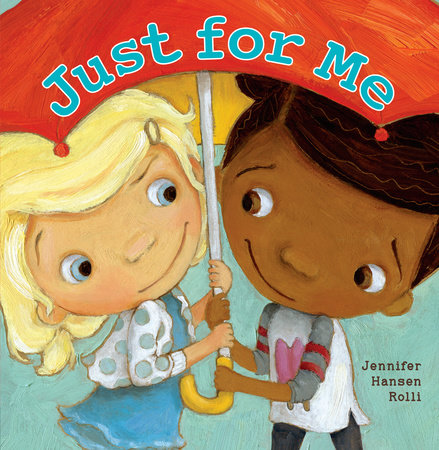Tips for Helping Reluctant Sharers
by Jennifer Hansen Rolli
One of my first childhood memories is of my neighborhood buddy, Larry, coaxing me outside to play with a lunchbox full of doughnuts. We were about four years old, and I suppose he was only sharing as a bribe, but we sure did enjoy those treats together! I am certain he was too young to think about how happy he made me, but as we grow we learn the root of sharing is making others happy.
Kids go through developmental phases of sharing starting around age two. In raising my own three children, I found that it was important to teach the good feeling of giving from the get-go. The closeness of parent to child makes it an easy place to start. When spooning food into my baby’s mouth, I’d take a bit and say something about how yummy it is to me, too. Once a child understands certain things are special to you — like your favorite lipstick or teacup — with guidance, let them hold it and get a good look at it…even have them try it out! Be sure to let them know how it makes you feel to see them enjoying something so dear of yours, and praise them for their carefulness. Also, say you would be happy to help them see it again. I missed that part with my daughter and she helped herself to a full makeover; lipsticks were never the same.
If you’re one of the lucky parents, teaching your child not to be possessive of objects that are “mine” and “wanting” what others have comes without too many meltdowns. Otherwise, be aware of your child’s behavior and work with them before preschool and playdates. Make sure there is enough to go around for everyone and put un-sharables out of sight in order to keep fits to a minimum. Hiding special things might be a bit impossible when it’s their blankie or baby doll that they can’t live without. But if a friend is curious about these “special objects,” it’s a good opportunity to model how to let someone else “see it.”
In my new book, Just For Me, Ruby goes about her day touting the special things in her life that are “just for her.” It starts out sweetly with her dog, who is tugging at her dolly and then about to knock down her castle of blocks. But when a friend comes to play, Ruby’s greediness kicks in. She offers up her old tricycle while keeping her sparkly new two-wheeler for herself, and then hogs the bubble blower while her friend is only allowed to pop the bubbles. Ruby’s friend becomes more and more discouraged and makes a move for the single tiara during dress-up time. Ultimately, when the tiara snaps, Ruby finally understands that it’s much more fun to share. When illustrating Just For Me, I used body and facial expressions to emphasize the changing feelings of each character while going through the spectrum of sharing. The book is filled with opportunities to talk about what the girls are thinking in each scenario and how the catastrophe could have been avoided all together.
Kids go through all kinds of phases, and in the heat of the moment it’s always difficult to remember that YES, they will get through it. Let’s face it, kids are going to have a tough time sharing throughout their childhood, which may extend well into their teenage years. But tantrums only make matters worse and take time away from solving the situation. The hope is for children to eventually learn this, and it happens sooner if they witness it in a patient and loving way at home.

